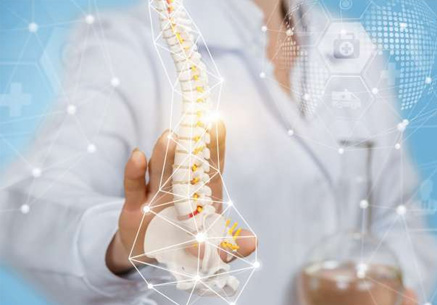Integrated Spine Treatment
An integrated approach for non-surgical spine treatment involves combining various evidence-based therapies and interventions to address spine-related conditions comprehensively. This approach aims to provide patients with the most effective and personalized treatment plan, utilizing a combination of therapies that work synergistically to achieve optimal outcomes.
Here are some key components of an integrated approach for non-surgical spine treatment:
- Accurate Diagnosis: An essential first step is obtaining an accurate diagnosis. This may involve a detailed medical history, physical examination, and diagnostic imaging (e.g., X-rays, MRI scans) to identify the specific spine condition and its underlying causes.
- Multidisciplinary Team: A team of healthcare professionals from different disciplines, such as orthopedic specialists, physiatrists, physical therapists, chiropractors, and pain management experts, collaborate to develop a comprehensive treatment plan tailored to the individual patient's needs.
- Physical Therapy: Physical therapy plays a central role in non-surgical spine treatment. Therapists use exercises and techniques to improve flexibility, strength, posture, and alignment. They may also incorporate modalities like heat therapy, cold therapy, or electrical stimulation to reduce pain and inflammation.
- Chiropractic Care: Chiropractic adjustments focus on realigning the spine and other joints to alleviate pain and improve mobility. Chiropractors may use hands-on manipulations or instrument-assisted techniques to address spinal misalignments and relieve nerve pressure.
- Pain Management: Pain management specialists can offer a range of interventions, such as epidural steroid injections, nerve blocks, or radiofrequency ablation, to provide temporary relief from pain and inflammation.
- Non-Surgical Spinal Decompression: This technique uses traction to gently stretch the spine and create negative pressure, which may help alleviate pressure on herniated discs and nerve roots.
- Acupuncture: Acupuncture, an ancient Chinese therapy, involves inserting thin needles into specific points on the body to stimulate natural healing responses and alleviate pain.
- Cognitive Behavioral Therapy (CBT): CBT can be beneficial for patients experiencing chronic pain. It helps patients cope with pain and improve their emotional well-being by addressing negative thought patterns and promoting positive coping strategies.
- Lifestyle Modification: Implementing lifestyle changes, such as adopting a proper ergonomic posture, maintaining a healthy weight, regular exercise, and quitting smoking, can positively impact spine health.
- Education and Self-Care: Providing patients with education about their condition and self-care strategies empowers them to take an active role in their recovery. This may include guidance on home exercises, proper body mechanics, and strategies for managing pain.
- Ongoing Monitoring and Adjustments: The integrated approach requires periodic assessments of the patient's progress. Treatment plans may be adjusted based on how the patient responds to various therapies.
By combining these different treatment modalities, an integrated approach for non-surgical spine treatment addresses the underlying issues contributing to spine-related conditions and aims to improve pain, function, and overall quality of life for the patient. It is crucial to consult with a qualified healthcare professional to determine the most suitable treatment plan based on the individual's specific condition and medical history.
